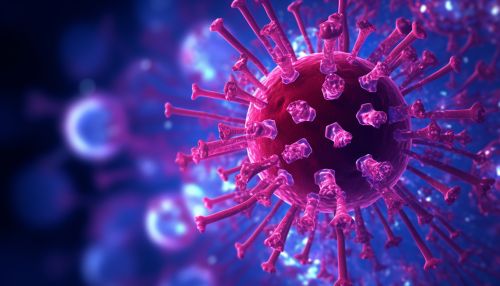COVID-19
Introduction
COVID-19, officially known as SARS-CoV-2, is a viral disease that was first identified in December 2019 in the city of Wuhan, China. It has since spread globally, leading to the ongoing COVID-19 pandemic. The virus is primarily spread between people during close contact, most often via small droplets produced by coughing, sneezing, or talking.


Virology
COVID-19 is caused by the SARS-CoV-2 virus. It is a positive-sense single-stranded RiboNucleic Acid (RNA) virus (and hence Baltimore class IV) that is contagious in humans. As described by the US National Institutes of Health, it is the successor to SARS-CoV-1.
Transmission
COVID-19 is primarily transmitted from person-to-person through respiratory droplets. These droplets are expelled when an infected person talks, coughs, or sneezes. The droplets can land in the mouths or noses of people who are nearby, or possibly be inhaled into the lungs.
Symptoms
COVID-19 symptoms vary in severity from asymptomatic to severe illness. Symptoms may appear 2-14 days after exposure to the virus. The most common symptoms include fever, dry cough, and tiredness. Less common symptoms include aches and pains, sore throat, diarrhea, conjunctivitis, headache, loss of taste or smell, a rash on skin, or discoloration of fingers or toes.
Prevention
Prevention measures include hand hygiene, wearing a mask, maintaining physical distance from others (especially from those with symptoms), covering coughs, and keeping unwashed hands away from the face. In addition, the use of a respirator with high filtering capacity is recommended for healthcare workers.
Treatment
There is currently no specific treatment for COVID-19. Management involves the treatment of symptoms, supportive care, isolation, and experimental measures. The World Health Organization (WHO) and National Institutes of Health (NIH) have suggested a protocol for the novel coronavirus which includes antiviral drugs.
Impact
The pandemic has caused global social and economic disruption, including the largest global recession since the Great Depression. It has led to the postponement or cancellation of sporting, religious, and cultural events, widespread supply shortages exacerbated by panic buying, and decreased emissions of pollutants and greenhouse gases. Many educational institutions and public areas have been partially or fully closed.
